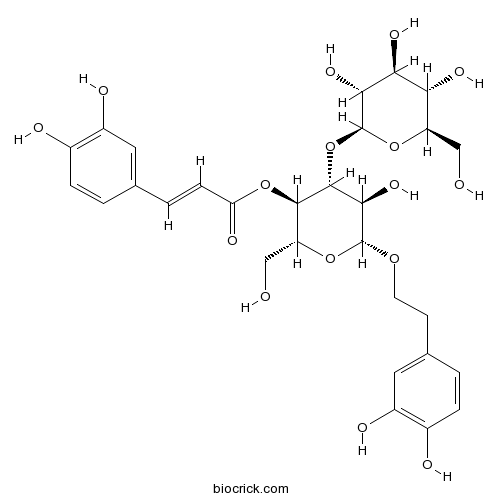Lagotis brevituba
Lagotis brevituba
1. The products in our compound library are selected from thousands of unique natural products; 2. It has the characteristics of diverse structure, diverse sources and wide coverage of activities; 3. Provide information on the activity of products from major journals, patents and research reports around the world, providing theoretical direction and research basis for further research and screening; 4. Free combination according to the type, source, target and disease of natural product; 5. The compound powder is placed in a covered tube and then discharged into a 10 x 10 cryostat; 6. Transport in ice pack or dry ice pack. Please store it at -20 °C as soon as possible after receiving the product, and use it as soon as possible after opening.
Natural products/compounds from Lagotis brevituba
- Cat.No. Product Name CAS Number COA
-
BCN6279
Plantamajoside104777-68-6
Instructions

-
BCN4136
Acteoside61276-17-3
Instructions

[Fast identification of constituents of Lagotis brevituba by using UPLC-Q-TOF-MS/MS method].[Pubmed: 28822158]
The chemical constituents of Lagotis brevituba were rapidly determined and analyzed by using ultra performance liquid chromatography tandem quadrupole time of flight mass spectrometry (UPLC-Q-TOF-MS/MS) method, providing material basis for the clinical application of L. brevituba. The separation was performed on UPLC YMC-Triart C₁₈ (2.1 mm×100 mm, 1.9 μm) column, with acetonitrile-water containing 0.2% formic acid as mobile phase for gradient elution. The flow rate was 0.4 mL•min-1 gradient elution and column temperature was 40 ℃, the injection volume was 2 μL. ESI ion source was used to ensure the data collected in a negative ion mode. The chemical components of L. brevituba were identified through retention time, exact relative molecular mass, cleavage fragments of MS/MS and reported data. The results showed that a total of 22 compounds were identified, including 11 flavones, 6 phenylethanoid glycosides, 1 iridoid glucosides, and 4 organic acid. The UPLC-Q-TOF-MS/MS method could fast identify the chemical components of L. brevituba, providing valuable information about L. brevituba for its clinical application.
Antiproliferative Activity of Phenylpropanoids Isolated from Lagotis brevituba Maxim.[Pubmed: 28744911]
None
Phenolics from Lagotis brevituba Maxim.[Pubmed: 27700190]
None
[Total flavones derived from Lagotis brevituba maxim reduce the levels of inflammatory cytokines in cerebral cortex and hippocampus of Alzheimer's disease mice].[Pubmed: 27363265]
Objective To investigate the mechanism behind the treatment of Alzheimer's disease (AD) with total flavones derived from Lagotis brevituba maxim (TF-LBM). Methods Fifty SAMP8 mice (aged 8 months) were randomly divided into 5 groups, (150, 300, 600) mg/kg TF-LBM groups, 0.65 g/kg donepezil HCl group and AD model group; 10 SAMR1 mice (aged 8 months) were used as a control group of normal aging. The AD model group and the normal aging control group were given the same volume of distilled water as TF-LBM groups. Eight weeks after intragastric administration, Morris water maze experiment was conducted to calculate the latency of place navigation. After the behavioral experiment, the brain cortical tissue and hippocampus (CA1 region) of the mice from various groups were taken to observe the morphological changes of the cortical tissue and hippocampus and test IL-1β, IL-6, TNF-α content. Results Compared with the model group, the escape latency of the normal aging group, the high-dose TF-LBM group and the donepezil HCl group were evidently shortened; compared with the normal aging group, IL-1β, IL-6, TNF-αof the model group increased significantly; compared with the model group, IL-1β content of the low-dose TF-LBM group had no obvious difference, while IL-1β content of the median-dose and high-dose TF-LBM groups and the donepezil HCl group decreased significantly; IL-6 content decreased in all TF-LBM groups and the donepezil HCl group; TNF-α level in the low-dose and median-dose TF-LBM groups had no evident difference, while it was reduced significantly in the high-dose TF-LBM group and the donepezil HCl group. Compared with the normal aging group, IL-1β, IL-6 and TNF-α content of the model group increased significantly; compared with the model group, IL-1β, IL-6 and TNF-α content of all TF-LBM groups and the donepezil HCl group decreased. Conclusion TF-LBM can improve the behavior change of SAMP8 mice with AD. TF-LBM can reduce the content of IL-6, IL-1β and TNF-α in cerebral cortex and hippocampus CA1.
[Analysis of varieties and standards of Scrophulariaceae plants used in Tibetan medicine].[Pubmed: 27141684]
In this paper, the popular domestic varieties and quality standard of Scrophulariaceae plants used in Tibetan medicine were analyzed. The results showed that there were 11 genera and 99 species (including varieties), as well as 28 medicinal materials varieties of Scrophulariaceae plants were recorded in the relevant literatures. In relevant Tibetan standards arid literatures, there are great differences in varieties, sources, parts, and efficacies of medicinal plant. Among them, about 41.4% (including 41 species) of endemic plants, about 15.2% (including 15 species) of the original plants have medicinal standard legal records, except the medicinal materials of Scrophalaria ningpoensis, Lagotis brevituba, Picrorhiza scrophulariiflora, Veronica eriogyne general, most varieties have not completed quality standard. Consequently it is necessary to reinforce the herbal textual, resources and the use present situation investigation, the effects of the species resources material foundation and biological activity, quality standard, specification the medical terms of the plants, and promote Tibetan medicinal vareties-terminologies-sources such as the criterion and quality standard system for enriching the varieties of Tibetan medicinal materials and Chinese medicinal resources.
Echinacoside induces rat pulmonary artery vasorelaxation by opening the NO-cGMP-PKG-BKCa channels and reducing intracellular Ca2+ levels.[Pubmed: 25864652]
Sustained pulmonary vasoconstriction as experienced at high altitude can lead to pulmonary hypertension (PH). The main purpose of this study is to investigate the vasorelaxant effect of echinacoside (ECH), a phenylethanoid glycoside from the Tibetan herb Lagotis brevituba Maxim and Cistanche tubulosa, on the pulmonary artery and its potential mechanism.
[Chemical constituents from Lagotis brevituba].[Pubmed: 20575388]
To study on the chemical consitituents of Lagotis brevituba.


